-
 Bitcoin
Bitcoin $117400
1.88% -
 Ethereum
Ethereum $3867
5.29% -
 XRP
XRP $3.081
2.58% -
 Tether USDt
Tether USDt $1.000
0.03% -
 BNB
BNB $779.7
0.92% -
 Solana
Solana $171.8
2.11% -
 USDC
USDC $0.9999
0.01% -
 Dogecoin
Dogecoin $0.2172
5.80% -
 TRON
TRON $0.3413
1.41% -
 Cardano
Cardano $0.7641
3.06% -
 Hyperliquid
Hyperliquid $39.69
3.62% -
 Sui
Sui $3.731
6.73% -
 Stellar
Stellar $0.4125
3.55% -
 Chainlink
Chainlink $18.23
8.86% -
 Bitcoin Cash
Bitcoin Cash $579.5
1.41% -
 Hedera
Hedera $0.2538
4.02% -
 Ethena USDe
Ethena USDe $1.001
0.00% -
 Avalanche
Avalanche $22.81
2.82% -
 Litecoin
Litecoin $121.7
1.10% -
 UNUS SED LEO
UNUS SED LEO $8.962
-0.33% -
 Toncoin
Toncoin $3.324
2.94% -
 Shiba Inu
Shiba Inu $0.00001263
2.30% -
 Uniswap
Uniswap $10.24
4.95% -
 Polkadot
Polkadot $3.780
3.09% -
 Dai
Dai $1.000
0.03% -
 Bitget Token
Bitget Token $4.432
1.64% -
 Cronos
Cronos $0.1493
3.87% -
 Monero
Monero $256.7
-9.05% -
 Pepe
Pepe $0.00001092
3.99% -
 Aave
Aave $279.0
6.11%
How to safely store Alkimi (ADS) coins?
When storing cryptocurrency, consider hardware wallets like Ledger Nano X for enhanced offline security, implementing multi-factor authentication for added protection, and adhering to guidelines provided by reputable exchanges and wallet providers to safeguard your digital assets.
Dec 24, 2024 at 04:54 pm
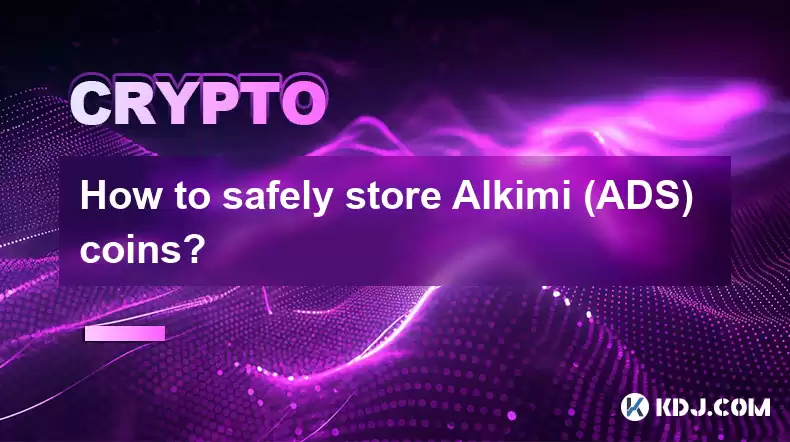
Key Points:
- Understand the different types of cryptocurrency wallets available, including hardware, software, and paper wallets.
- Evaluate the security features of each type of wallet and choose the one that aligns best with your needs and preferences.
- Implement best practices for storing cryptocurrency securely, such as strong passwords, multi-factor authentication, and offline storage.
- Follow guidelines and official recommendations from cryptocurrency exchanges and wallet providers for ensuring the safety of your assets.
- Stay informed about potential risks and vulnerabilities in the cryptocurrency industry, and adjust your security measures accordingly.
Understanding Cryptocurrency Wallets:
- Hardware Wallets:
Hardware wallets are physical devices designed to store cryptocurrency offline. They provide a high level of security by keeping your private keys isolated from the internet. Some popular hardware wallets include Ledger Nano X, Trezor Model T, and SafePal S1. - Software Wallets:
Software wallets are applications installed on your computer or mobile device. They offer convenience and ease of use but may be more vulnerable to hacking and malware attacks. Examples of software wallets include: MetaMask, Trust Wallet, and Exodus. - Paper Wallets:
Paper wallets are simply pieces of paper on which cryptocurrency addresses and private keys are physically printed. They provide a secure offline storage option but require utmost care and protection as they can be easily lost or destroyed.
Evaluating Wallet Security:
- Multi-Factor Authentication:
Consider wallets with multi-factor authentication mechanisms, such as two-factor authentication (2FA) or multi-factor authentication (MFA). These measures add an extra layer of security by requiring multiple forms of verification when accessing the wallet. - Encrypted Backups:
Ensure that your wallet provider offers encrypted backups. This allows you to recover your assets in case of device failure or loss. - Regular Security Updates:
Choose a wallet provider that actively releases security updates to address potential vulnerabilities and ensure the ongoing protection of your assets.
Best Practices for Safe Storage:
- Strong Passwords:
Use strong, unique passwords for your wallet and any associated accounts. Avoid using easily guessable passwords or reusing passwords across multiple accounts. - Avoid Suspicious Links and Emails:
Never click on links or open emails from unknown senders. These may contain phishing attempts aimed at stealing your login credentials or private keys. - Physical Security for Paper Wallets:
Store paper wallets in a secure, dry location away from potential hazards like fire or water damage. Consider laminating the paper wallet for added protection.
Guidelines and Recommendations from Exchanges and Wallet Providers:
- Follow Exchange Guidelines:
Reputable cryptocurrency exchanges typically provide comprehensive guidelines on how to safely store your assets on their platform. Adhere to these recommendations to enhance the security of your funds. - Use Reputable Wallet Providers:
Select wallet providers with a proven track record of security and reliability. Check online reviews and consult trusted sources before choosing a wallet.
FAQs:
1. Which type of wallet is considered the most secure?
Hardware wallets are generally considered the most secure option for cryptocurrency storage due to their offline nature and enhanced security features.
2. How often should I back up my cryptocurrency wallet?
Regular backups are crucial for protecting your assets. It is recommended to create encrypted backups periodically, especially after making any significant changes or updates to your wallet.
3. What should I do if my hardware wallet is lost or stolen?
Immediately contact the manufacturer of your hardware wallet and follow their instructions for reporting the loss or theft. If you have properly set up a seed phrase or recovery key, you can restore access to your assets on a new device.
Disclaimer:info@kdj.com
The information provided is not trading advice. kdj.com does not assume any responsibility for any investments made based on the information provided in this article. Cryptocurrencies are highly volatile and it is highly recommended that you invest with caution after thorough research!
If you believe that the content used on this website infringes your copyright, please contact us immediately (info@kdj.com) and we will delete it promptly.
- Pi Coin's dApp and AI Potential: Building a Decentralized Future
- 2025-08-08 02:30:12
- Ruvi AI Takes the Lead: Outshining Dogecoin on CoinMarketCap
- 2025-08-08 02:50:12
- Cryptos Under $1: Is Ripple Still the King?
- 2025-08-08 03:50:12
- Cold Wallet, Bonk Price, ICP Price: Navigating the Crypto Landscape in 2025
- 2025-08-08 03:56:12
- Memecoins, Low-Cap Gems, and the Hunt for 10,000x Gains: What's Next?
- 2025-08-08 02:50:12
- Bitcoin, Greenidge, and Liquidity: Navigating the Crypto Currents in NYC
- 2025-08-08 02:30:12
Related knowledge

Where can I buy UMA (UMA)?
Aug 07,2025 at 06:42pm
Understanding UMA and Its Role in Decentralized FinanceUMA (Universal Market Access) is an Ethereum-based decentralized finance (DeFi) protocol design...

What exchanges support buying IOTA (MIOTA)?
Aug 07,2025 at 09:58pm
Understanding the Role of Private Keys in Cryptocurrency SecurityIn the world of cryptocurrency, private keys are the cornerstone of ownership and con...
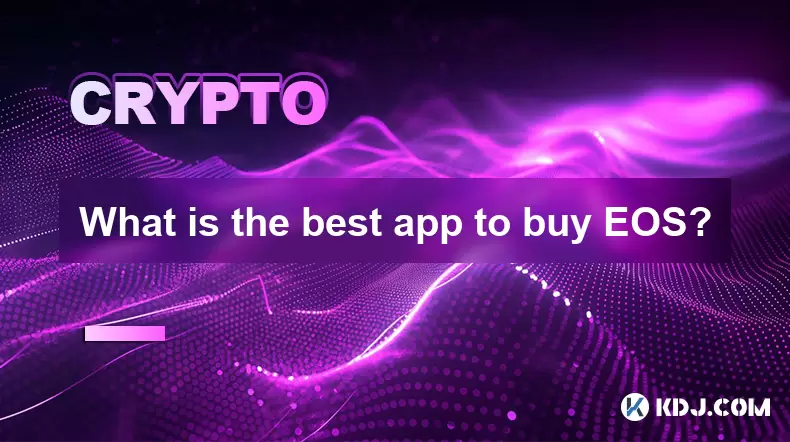
What is the best app to buy EOS?
Aug 07,2025 at 04:35pm
Understanding EOS and Its Role in the Cryptocurrency EcosystemEOS is a blockchain platform designed to support decentralized applications (dApps) with...
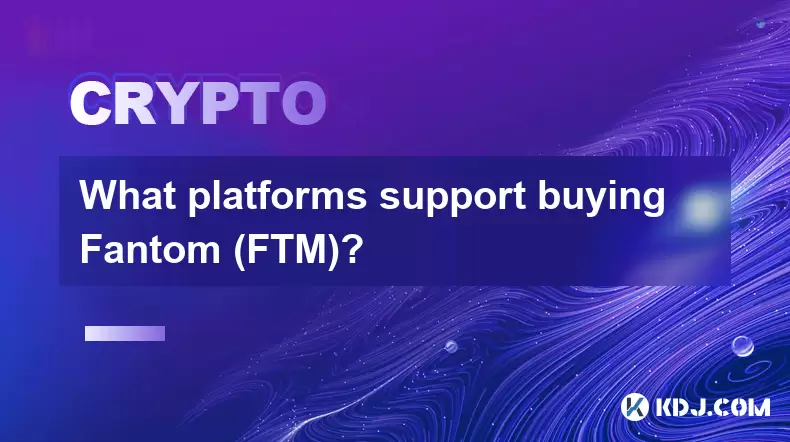
What platforms support buying Fantom (FTM)?
Aug 08,2025 at 01:56am
Overview of Fantom (FTM) and Its EcosystemFantom (FTM) is a high-performance, scalable, and secure layer-1 blockchain designed to overcome the limitat...
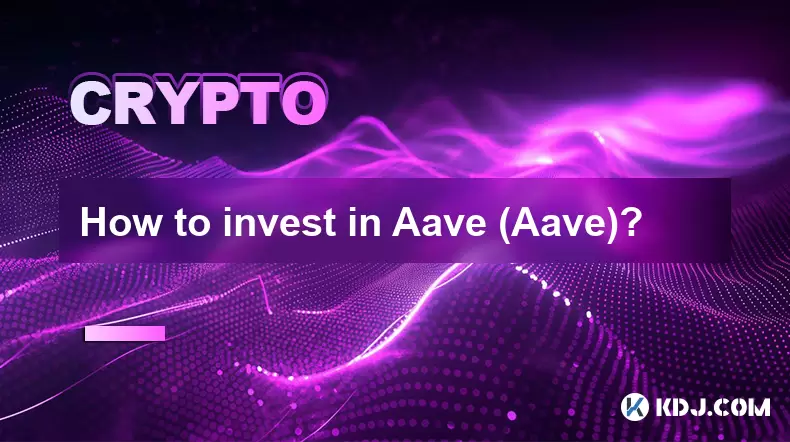
How to invest in Aave (Aave)?
Aug 08,2025 at 01:07am
Understanding Aave (AAVE) and Its Role in DeFiAave is a decentralized finance (DeFi) protocol that enables users to lend, borrow, and earn interest on...
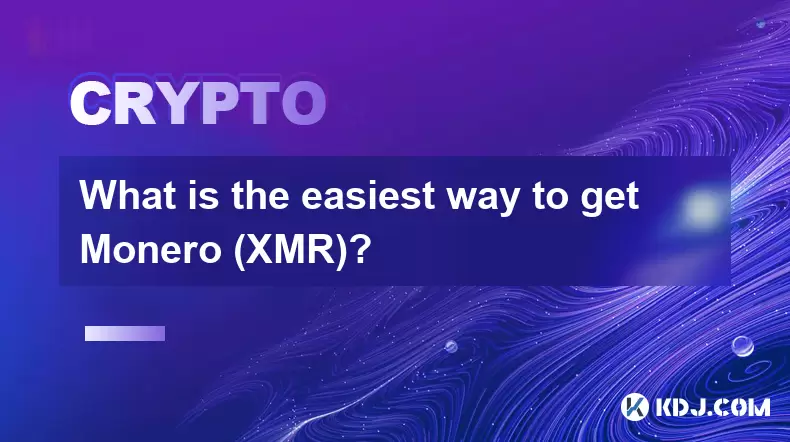
What is the easiest way to get Monero (XMR)?
Aug 08,2025 at 02:56am
Understanding Monero (XMR) and Its Privacy FeaturesMonero (XMR) is a privacy-focused cryptocurrency that ensures complete anonymity in transactions th...

Where can I buy UMA (UMA)?
Aug 07,2025 at 06:42pm
Understanding UMA and Its Role in Decentralized FinanceUMA (Universal Market Access) is an Ethereum-based decentralized finance (DeFi) protocol design...

What exchanges support buying IOTA (MIOTA)?
Aug 07,2025 at 09:58pm
Understanding the Role of Private Keys in Cryptocurrency SecurityIn the world of cryptocurrency, private keys are the cornerstone of ownership and con...

What is the best app to buy EOS?
Aug 07,2025 at 04:35pm
Understanding EOS and Its Role in the Cryptocurrency EcosystemEOS is a blockchain platform designed to support decentralized applications (dApps) with...

What platforms support buying Fantom (FTM)?
Aug 08,2025 at 01:56am
Overview of Fantom (FTM) and Its EcosystemFantom (FTM) is a high-performance, scalable, and secure layer-1 blockchain designed to overcome the limitat...

How to invest in Aave (Aave)?
Aug 08,2025 at 01:07am
Understanding Aave (AAVE) and Its Role in DeFiAave is a decentralized finance (DeFi) protocol that enables users to lend, borrow, and earn interest on...

What is the easiest way to get Monero (XMR)?
Aug 08,2025 at 02:56am
Understanding Monero (XMR) and Its Privacy FeaturesMonero (XMR) is a privacy-focused cryptocurrency that ensures complete anonymity in transactions th...
See all articles

























































































